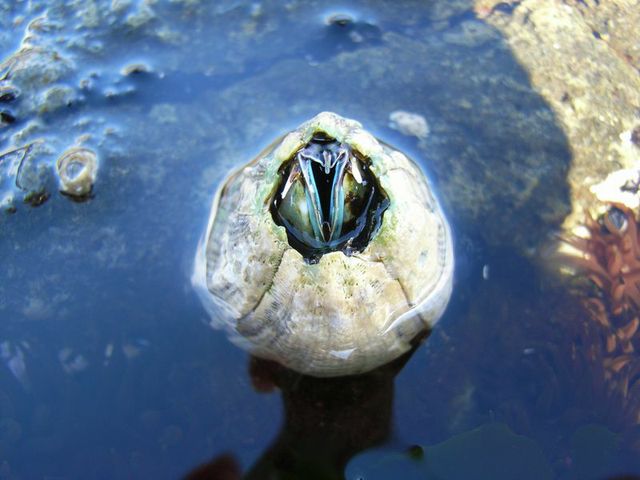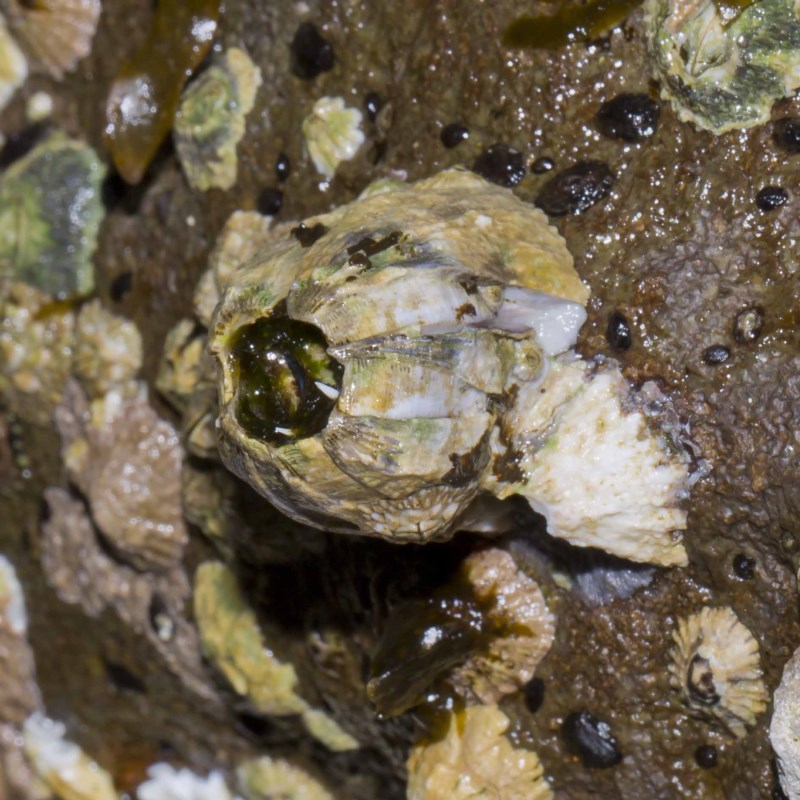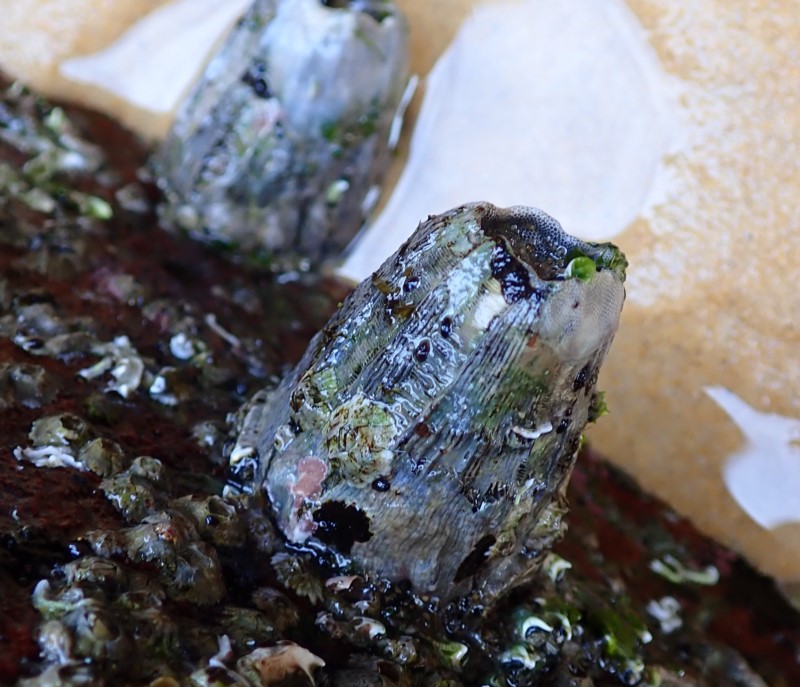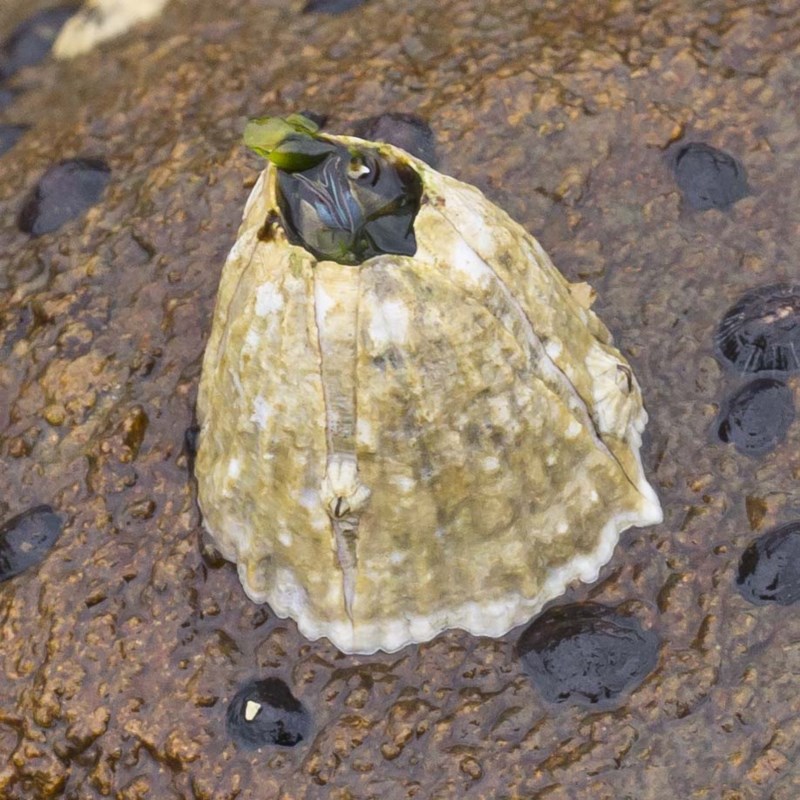Field Guide
Improve your identification skills. Download your Giant Rock Barnacle guide here!

Barnacles are small invertebrates that live inside hard circular or pyramid-like structures made from calcium-carbonate. They are distinguished by their size: they are taller than they are round and have similar shape to a volcano. They can be found singularly or in a group.
Giant rock barnacles are the largest type of barnacle and are comprised of six large plates that are white to light green in colour, and have top to bottom (transverse) grooves on them. They have a distinctive bright blue body (mantle) inside.
Barnacle larva are free swimming and live in the plankton layer and when they are old enough they return to the rocky shores where they find a spot and cement their heads to the rock and then grow their shell around their body.
30 - 60 mm height and 25 - 30 mm diameter.

Search area for 30 minutes and record the following:
Abundant: found easily with little searching
Frequent: found with minimal searching
Rare: only 1 or 2 individuals found with intensive searching
Not found: not present during search
Giant Rock Barnacles are under increasing stress due to ocean acidification which can weaken their calcium carbonate shells and reduce body condition. This makes them more prone to disease, predation and low reproduction. Increasing water temperature will likely affect their abundance and cause a southward shift in their distribution.
They were absent from Tasmania in the 1950s, but are now found along the north-east coast. Scientists think that warming temperatures have allowed it to settle and thrive on Tasmanian shores.


Limpets can resemble Barnacles as both are round, pyramid-shaped and cream in colour. Limpets can be distinguished by their shells which consist of only one singular plate and they are also free moving whereas barnacles are always fixed to a hard surface.